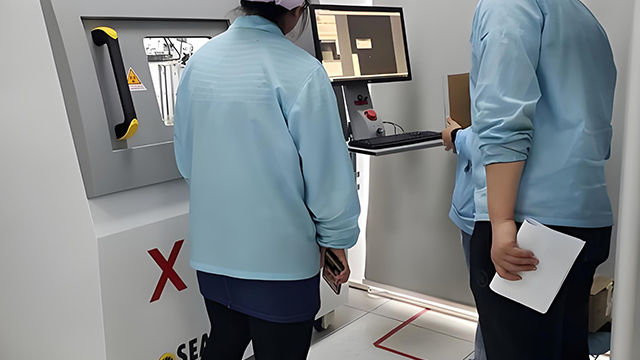Smart locks have become an essential component of modern security systems, offering a blend of convenience and high-tech protection. Unlike traditional mechanical locks, smart locks are powered by digital technologies that rely on sophisticated printed circuit board assemblies (PCBA) to function. The security and reliability of these locks are paramount, and the design of the PCBA plays a crucial role in ensuring both.
Advanced PCB design in smart locks is not just about connecting electrical components—it’s about creating a system that is secure, durable, and capable of withstanding various environmental and cyber threats. Let's explore how cutting-edge PCB design ensures the top-notch performance of smart locks, enhancing both security and reliability.
The Backbone of Smart Lock Functionality: The Role of PCBA
At the heart of every smart lock is the PCBA, which integrates various key components such as microcontrollers, sensors, motors, and communication modules. These components work together to facilitate actions like unlocking the door remotely, setting access schedules, and monitoring entry attempts.
For a smart lock to function securely and reliably, the PCB must be designed to meet several stringent criteria, including robustness against hacking attempts, resistance to environmental factors, and consistency in its mechanical performance.
1. Enhanced Security Through Robust Encryption
One of the primary concerns with smart locks is ensuring that they remain secure from cyber threats. A critical aspect of advanced PCB design is the integration of strong encryption protocols directly into the PCB. This includes hardware-based encryption modules that safeguard communication between the lock and the user's device, whether it's a smartphone, key fob, or access card.
Advanced PCBs use secure microcontrollers with cryptographic engines that ensure data transmitted during lock and unlock operations is encrypted end-to-end. This prevents unauthorized access by intercepting signals or hacking into the communication channels. Additionally, these components often include secure boot features that verify the integrity of the firmware on the device, preventing malware or unauthorized software from being installed.
2. Reliability Under Extreme Conditions
Smart locks are often installed on the exterior of buildings or in environments that experience temperature fluctuations, humidity, and exposure to dust or rain. A poorly designed PCB could easily malfunction under these conditions, making the lock unreliable and potentially compromising security.
Advanced PCB designs for smart locks include protective coatings and conformal layers that shield the board from moisture and dust, preventing short circuits and corrosion. Furthermore, engineers design the PCB with temperature-resistant components that can withstand high heat or extreme cold, ensuring the lock remains functional in a variety of climates.
Another key feature is the incorporation of backup power systems, such as batteries or capacitors, which ensure the lock will continue to operate during power failures or battery depletion. This design feature guarantees that the lock remains reliable even when external conditions are not ideal.
3. Low Power Consumption for Extended Battery Life
A significant advantage of smart locks is their convenience—being able to operate wirelessly without the need for frequent battery replacements. Advanced PCB designs are optimized for low power consumption, ensuring that the lock remains operational for extended periods, even on a small, compact battery.
Power-efficient components and circuit layouts ensure that the lock consumes minimal energy while maintaining full functionality. For example, many smart locks use low-power Bluetooth or Wi-Fi chips that only consume energy when actively communicating with the paired device. This minimizes energy waste and extends the battery life, providing users with longer periods of operation between battery changes.
4. Seamless Integration of Multiple Communication Technologies
Today’s smart locks often incorporate multiple communication methods, such as Bluetooth, Wi-Fi, Zigbee, and even NFC (Near Field Communication). The PCB design must ensure these various communication modules work together seamlessly, allowing the user to control the lock from different devices or platforms.
Advanced PCB designs include careful routing and integration of these technologies to prevent interference and optimize performance. For instance, a smart lock may use Wi-Fi for remote access through a smartphone app while utilizing Bluetooth for local control when the user is in proximity. A well-designed PCBA ensures smooth handover between these communication systems, providing a seamless user experience without connectivity issues.
5. Durability and Long-Term Performance
The reliability of a smart lock is not just about security features—it's also about long-term durability. Since smart locks are frequently used and exposed to wear and tear, the PCBA must be designed for robustness to ensure consistent performance over time.
Manufacturers use high-quality materials and advanced PCB technologies that offer resistance to vibration, mechanical stress, and electromagnetic interference. This ensures that the lock continues to function properly after years of daily use, maintaining its accuracy in sensing and unlocking without degradation in performance.
Conclusion
The advanced PCB design of smart locks is central to their functionality, security, and reliability. From encryption and low power consumption to durability and resistance to environmental factors, the design of the printed circuit board assembly ensures that these locks provide not only peace of mind but also long-term, hassle-free performance. As the demand for smart home technology grows, the role of advanced PCBA in securing our homes and businesses will continue to evolve, ensuring that these devices remain at the forefront of security technology.
For manufacturers in the smart lock industry, investing in cutting-edge PCB design isn’t just about building a functional product—it’s about building a secure, reliable, and user-friendly device that stands the test of time.
Tags:#SmartLocks #PCBA #PCBDesign #HomeSecurity #Encryption #LowPowerDesign #Reliability #SmartHomeTechnology #WirelessSecurity

Comments